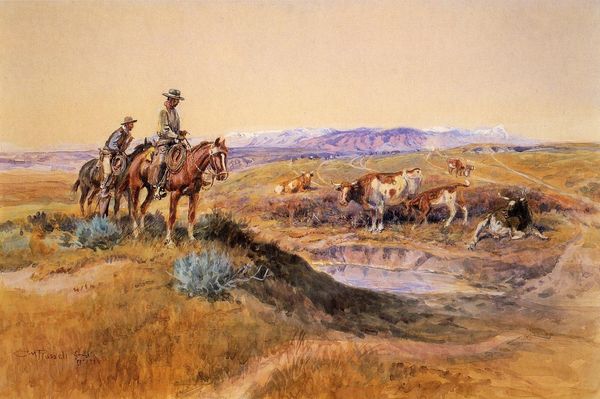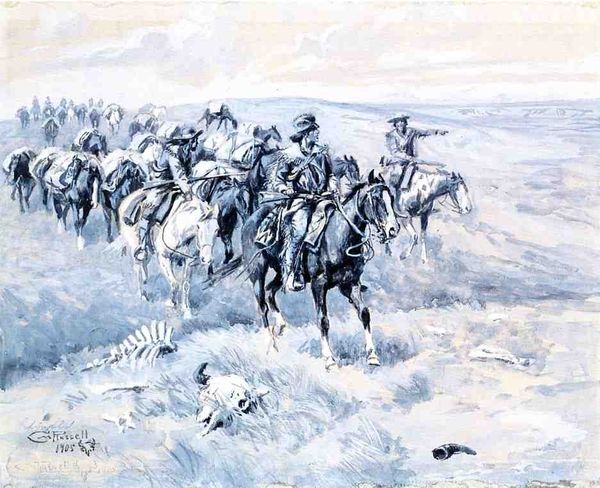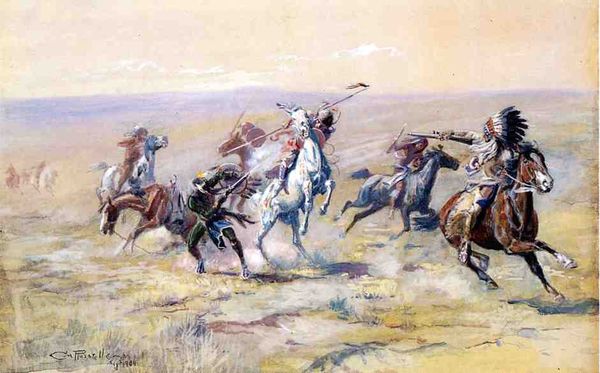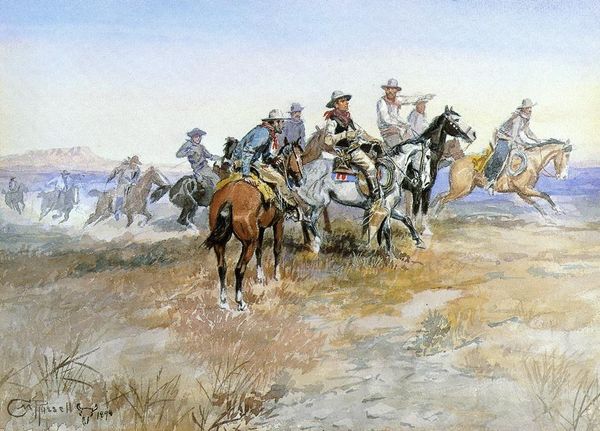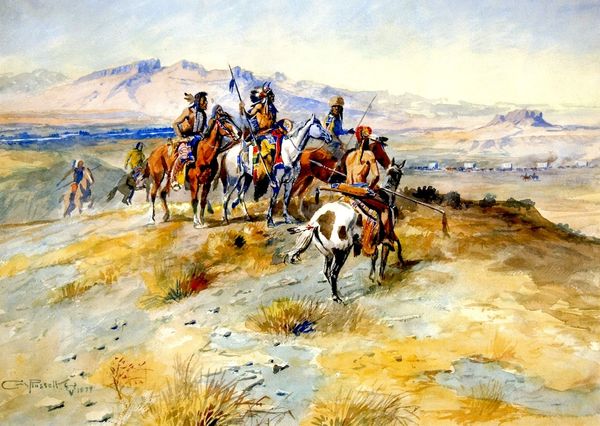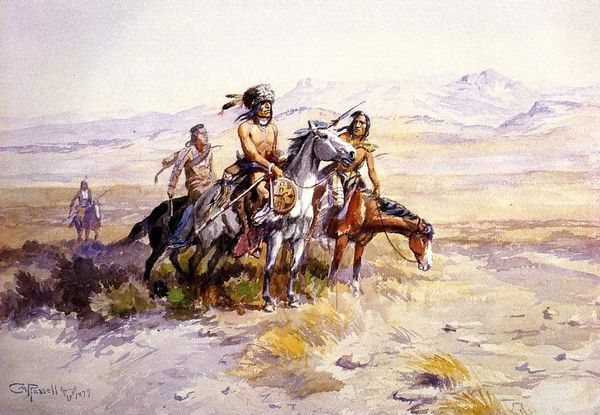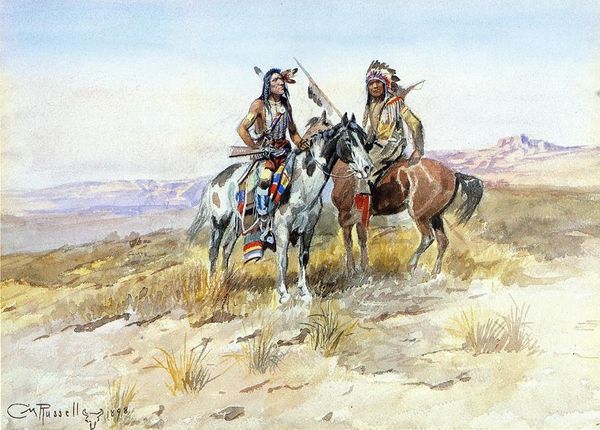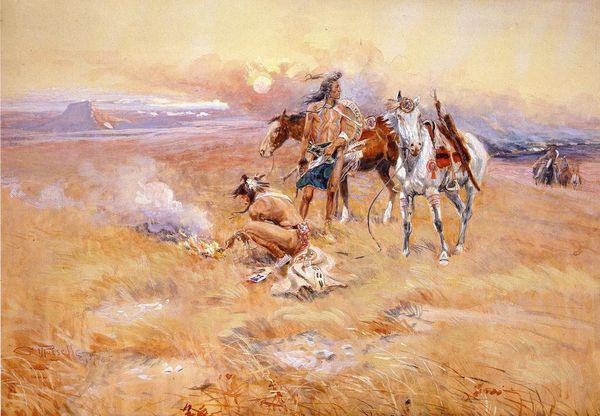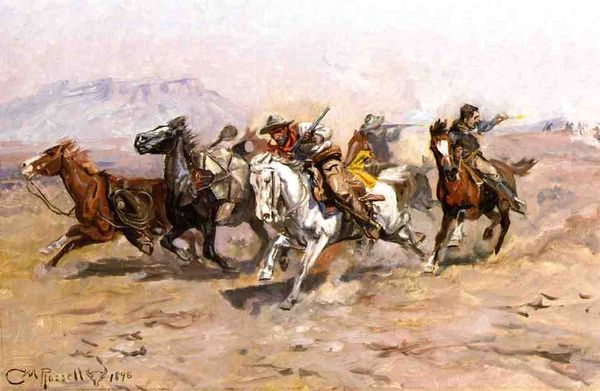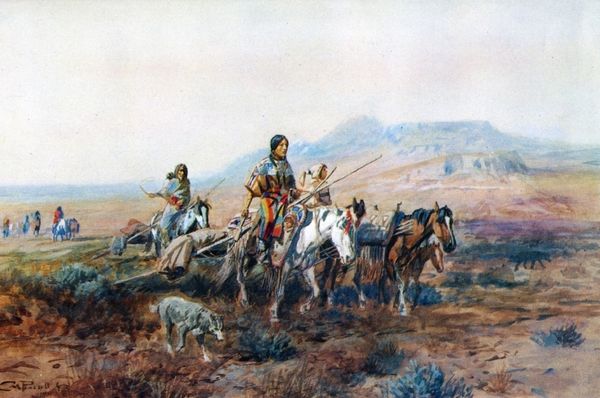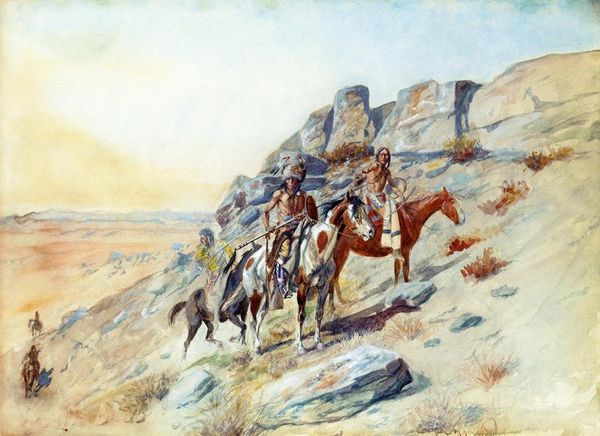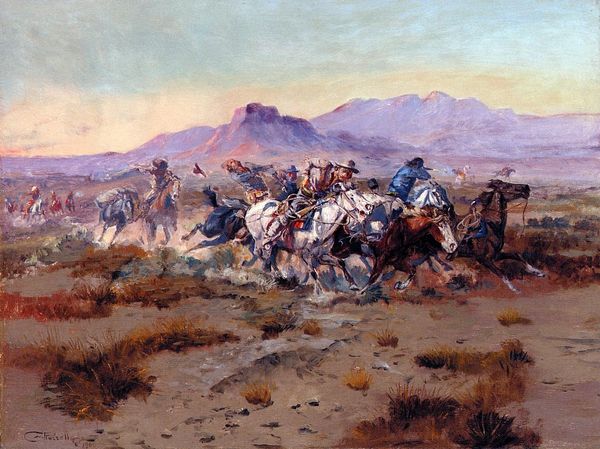
painting
#
painting
#
countryside
#
landscape
#
figuration
#
oil painting
#
watercolor
Copyright: Public domain
Charles M. Russell painted "Coming Across the Plain" during a time of immense change in the American West, reflecting both an idealized vision and the harsh realities of the era. Born in 1864, Russell lived through the decline of the open range and the forced assimilation of Native American tribes. Here, we see a group of indigenous people on horseback, with a string of pack animals trailing behind them. One figure lies on the ground, perhaps fallen or left behind, creating a narrative of hardship. Russell's romantic portrayal of the West often clashed with the brutal policies enacted against Native populations. Though he admired their way of life, his art also contributed to the mythologizing of a vanishing culture, a common sentiment at the time. As Russell himself stated, "In my book a man who can't see nothin' in the sunset ain't got no reason to be alive." "Coming Across the Plain" invites us to consider the complexities of the frontier experience, acknowledging both its allure and the displacement and suffering it caused. It encourages a dialogue about whose stories are told and how we grapple with the legacies of westward expansion.
Comments
No comments
Be the first to comment and join the conversation on the ultimate creative platform.

